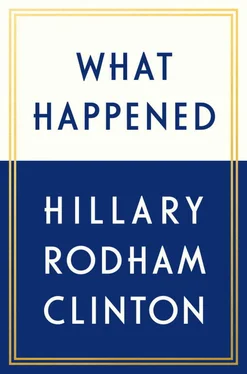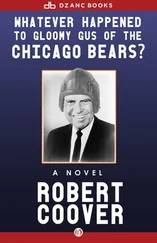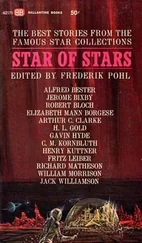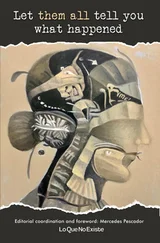In Maumee, we pulled into the parking lot of a strip mall off the highway for lunch. I ordered a chicken burrito bowl with a side of guacamole. Nick Merrill, my traveling press secretary, made fun of me for eating it out of the little cup with a spoon, bypassing the chips. Nobody in the restaurant thought it was remarkable that I was there. In fact, nobody recognized me. Bliss!
But when members of the press found out, they reacted like a UFO had landed in Ohio and an extraterrestrial had wandered into a Chipotle. CNN ran grainy footage from the restaurant’s security camera, which made it look a little like we were robbing a bank. The New York Times did an analysis that concluded my meal was healthier than the average Chipotle order, with fewer calories, saturated fat, and sodium. (Good “get” for the Times ; they really ate CNN’s lunch on that one.) The whole thing felt silly. To paraphrase an old saying, sometimes a burrito bowl is just a burrito bowl.
=====
Soon I was back in Iowa, the state that handed me a humbling third-place finish in 2008. Like the road trip, I wanted this first visit to be no-frills. I would do more listening than talking, just as I had at the start of my first Senate campaign in New York. My new state director, Matt Paul, who knew Iowa inside and out after years of working for Governor Tom Vilsack and Senator Tom Harkin, agreed. Iowans wanted to get to know their candidates, not just listen to them give speeches. That’s exactly what I wanted, too.
When Donald Trump started his campaign, he seemed confident that he already had all the answers. He had no ideological core apart from his towering self-regard, which blotted out all hope of learning or growing. As a result, he had no need to listen to anyone but himself.
I approached things differently. After four years traveling the world as Secretary of State, I wanted to reconnect with the problems that were keeping American families up at night and hear directly about their hopes for the future. I had a core set of ideas and principles but wanted to hear from voters to inform new plans to match what was really going on in their lives and in the country.
One of the first people I met in New Hampshire, another early contest state, provided a case in point. Pam was a grandmother in her fifties with gray hair and the air of someone who carries a lot of responsibility on her shoulders. She was an employee of a 111-year-old family-run furniture business I visited in Keene. We were talking about how to help small businesses grow, but Pam had a different challenge on her mind. Her daughter had gotten hooked on pain medication after giving birth to a baby boy, which led to a long struggle with drug addiction. Eventually Child and Family Services started calling Pam, warning that her grandson could end up in foster care. So she and her husband, John, took the child in, and Pam found herself back in the role of primary caretaker she thought she had finished years before.
Pam wasn’t the complaining type. This was a labor of love, and she was glad to pick up the slack, especially now that her daughter was in treatment. But she was worried. A lot of families in town were facing similar struggles. In New Hampshire, more people were dying from drug overdoses than from car crashes. The number of people seeking treatment for heroin addiction had soared 90 percent over the past decade. For prescription drugs, the number was up 500 percent.
I knew a little about this. At the time, Bill and I were friends with three families who had lost young adult children to opioids. (Sadly, that number has now grown to five.) One was a charismatic young man who worked at the State Department while he was in law school. A friend of his offered some pills, he took them, went to sleep that night, and never woke up. Others took drugs after drinking, and their hearts stopped. After these tragedies, the Clinton Foundation partnered with Adapt Pharma to make available free doses of the opioid antidote naloxone (Narcan), which can save lives by helping prevent overdoses, to every high school and college in the United States.
On that first visit to New Hampshire, in a coffee shop in downtown Keene, a retired doctor leaned in and asked, “What can you do about the opioid and heroin epidemic?” It was chilling to hear that word, epidemic , but it was the right one. In 2015, more than thirty-three thousand people died from overdosing on opioids. If you add to that the number from 2014, it’s more Americans than were killed in the entire Vietnam War. Resources for treatment couldn’t come close to keeping up. Parents liquidated their savings to pay for their kids’ treatment. Some called the police about their own children because they had tried everything else.
Yet despite all this, substance abuse wasn’t getting much national attention, either in Washington or in the national media. I didn’t think about it as a campaign issue until I started hearing stories like Pam’s in Iowa and New Hampshire.
I called my policy team together and told them we had to get working right away on a strategy. My advisors fanned out. We held town hall meetings and heard more stories. In one session in New Hampshire, a substance abuse counselor asked anyone who had been impacted by the epidemic to raise his or her hand. Nearly every hand in the room went up. A woman in treatment told me, “We’re not bad people trying to get good. We’re sick people trying to get well.”
To help her and millions of others do that, we came up with a plan to expand access to treatment, improve training for doctors and pharmacists prescribing prescription drugs, reform the criminal justice system so more nonviolent drug offenders end up in rehab instead of prison, and make sure every first responder in America carries naloxone, which is close to a miracle drug.
This became a model for how my campaign operated in those early months. People told me story after story about the challenges their families faced: student debt, the high cost of prescription drugs and insurance premiums, and wages too low to support a middle-class life. I’d use those conversations to guide the policies already being hammered out back in our Brooklyn headquarters. I wanted my policy shop to be bold, innovative, industrious, and, most importantly, responsive to people’s real-life needs. Jake Sullivan, my director of policy planning at the State Department; Ann O’Leary, a longtime advisor of mine who shared my passion for children and health care policy; and Maya Harris, a veteran civil rights advocate, built and led a great team.
You can compare this to how Trump operated. When the opioid epidemic finally started getting news attention, he jumped on it as a way of making people believe that America was falling apart. But once he became President, he turned his back on everyone who needed help by seeking to cut money for treatment.
The press often seemed bored by the roundtables where these conversations happened. Critics dismissed them as staged or carefully controlled. But I wasn’t bored. I wanted to talk with people, not at them. I also learned a lot. To me, this was a big part of what running for President was supposed to be.
=====
Over the long months that I had weighed running a second time, I thought a lot about what kind of campaign I’d want. I certainly wanted one different from the one I ran during my 2008 primary loss to Barack Obama. I studied what he did right and I did wrong. There was more to learn after 2012, when the President put together another strong campaign that helped him win reelection over Mitt Romney by a healthy margin despite a lackluster economy. His operations were two of the best ever. I paid attention.
My low-profile first trip to Iowa reflected some of the lessons that I kept in mind as I started to put my own organization in place. In 2008, I had been criticized for arriving in Iowa like a queen, holding big rallies and acting like victory was inevitable. I never thought that was a fair description of me or our campaign; we believed I could prevail in a crowded and talented field, but we certainly didn’t take Iowa for granted. In fact, we recognized that it wasn’t an ideal first contest for me and spent a fair amount of 2007 trying to figure out how to make the best of it. Still, the criticism stuck, and I took it seriously. This time I was determined to run like an underdog and avoid any whiff of entitlement.
Читать дальше












